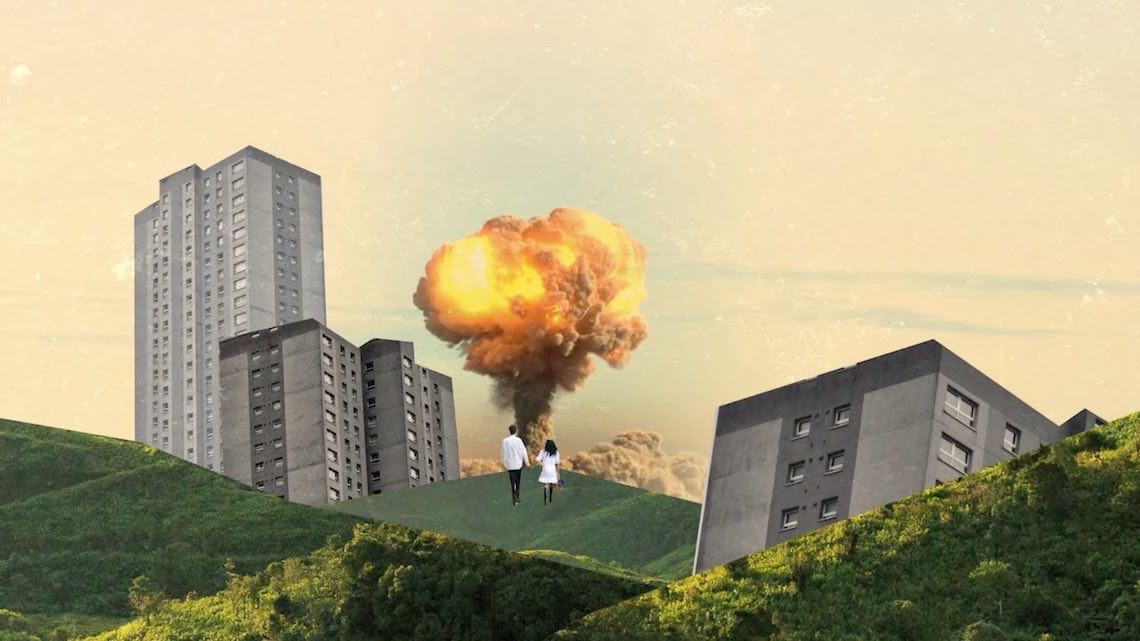Cheung (2020) on Poetry Fondation.org defines ecopoetry as ‘emphasis on drawing connections between human activity—specifically the making of poems—and the environment that produces it, ecopoetics rose out of the late 20th-century awareness of ecology and concerns over environmental disaster’. Though the prefix ‘-eco’ makes ecopoetry’s link to the environment clear, Morse (2012) claims ecopoetry started with the romantic poets, and that it is concerned with the barriers between us, nature and spirituality.
Nature is shown to be a gateway to the divine in poems by Romantics, such as Coleridge’s ‘The Rhyme of the Ancient Mariner’ (1797), Wordsworth’s The Idiot Boy (1798) and Blake’s The Tyger (1794). Morse (2012) writes that these poets wished to affirm man’s place as a part of nature and attempted to break down binary concepts between viewing things as either ‘urban’ or ‘natural’. Morse (2012) cites Tuan (1990) ‘At first there is wilderness, undifferentiated space. A clearing is made in the forest and a few houses are built. Immediately differentiation occurs; on the one side there is wilderness, on the other a small, vulnerable, man-made world’. Ecopoetry can attempt to break down this barrier between wild and tamed, urban and natural, humans and the divine.
In Coops’ ‘Crimes against Creation’, both the lyrics and the video, which is directed by Gary Motion, appear to pursue the same purpose. The video is constantly blending ‘urban’ and ‘natural’ images, integrating the two, while including Buddhist imagery, the romantics heavily influenced by Asian traditions. Spirituality is a common trope of ecopoetry. This is shown in ‘Crimes against Creation’ through imagery, symbolism and the editorial choices. In this article, I will discuss the how the video aligns itself with ecopoetry.
Establishing scenes
Motion’s choice of having the music video take place in an illustrated, cartoon-like world resonates with the principles of eco-poetry previously discussed. The South Park like mix-match of rendered ‘real world’ and ‘abstract’ concepts gives the viewer a feeling that the video could be dismantled and reassembled at any moment, affirming that boundaries are mental constructs and that we have the power and potential for environmental reform.
In the first shot, the camera descends into an infinite regression of roads, the mismatch of endless paths not only seemingly alluding to our environmental ‘paths’ we could take, but also infinity. The concept of infinity or eternity is frequently found within religious traditions and in this case, likely refers to a mystical presence found in nature. Though the picture consists completely of concrete, the transition to the next scene is instant, cutting in abruptly. It displays a seemingly endless mishmash of trees, linking it to the previous frame through the theme on infinity. This violent scene transition ‘cuts’ down the barrier between urban and natural environments, while alluding the there is a spiritual force behind both.
This collective of trees in this frame consists of palm trees and pine trees to name a few, obviously not an example of your standard forest. The environment makes a point of not being specific to any nation. That signs and security cameras are jutting out of the forest shows that it is the separation of urban and nature that is a crime. The camera then suddenly pans upwards, showing something concealed behind the trees, communicating an upcoming danger. The viewer is presented with a city standing apart from trees with ‘Crimes against Creation’ written above. This frame is in symmetry with a frame near the end of the video in which the city is on fire. As the city is placed higher in the frame the distance between it and the forest is greater amplified, highlighting the distinction between what we see as ‘natural’ and what we see as ‘urban’.
The penultimate establishing scene consists of a wire fence in front of smoke billowing factories, while bits of wire twist off and turn into birds. The message seems to be that manufactured items come from materials found naturally in the earth, again blurring the distinction between what is ‘urban’ and what is ‘natural’. The last scene is focused on the future. A planet is sat in a strange purple cosmos, with a man standing on the planet, looking through a large picture frame. Saturn can be seen through the frame, it’s rings turned into a space highway for astral cars. Again, this imagery blends what we define as ‘natural’ and ‘urban’,and suggests the need for environmental reform.
Video
After the establishing scenes, Coops emerges out of the words like and wandering holy man, dressed fully in white. This Jesus like appearance places Coops as a divine poet/prophet, another trope from the romantic poets. Cartoon Coops proceeds to walk through this ever-changing tapestry while commenting on what he sees and the social injustices of the world, again reminiscent of the characters found in Wordsworth’s and Coleridge’s Lyrical Ballads. Certainly, Coops is playing to the hippy, stoner, spiritual crowd, which is big in British Hip-hop, such as the references found in Fliptrix and Leaf Dog’s work.
I think Coops is trying to do more though. By aligning himself with eco-poetry and the ‘wise poet who can see the evil in the world’ trope of the romantic poets, Coops is claiming the mantle of a romantic poet. One of the first things the cartoon Coops sees is a still pool, which becomes rippled by the flashing images of money. A still pool is often used in Buddhist poetry to denote a clear mind, while desire, represented by money, is shown to disturb a clear mind. Buddhist imagery, such as an almost constant reference to change, is used throughout the video.
Cutting and Candan (2015) write ‘Bordwell (2006: 137) reported that filmmakers have found that longer-scaled (wider-angle) shots must be longer in duration, and that shorter-scaled shots (like close-ups) can be shorter in duration. Presumably, this is because longer-scaled shots invite the viewer to look around more, requiring more fixations’. Motion largely uses wide-angle shots in the video to better capture the environment and bring the viewers’ attention to it. The motion perspective of the video makes the viewer feel they are panning with the camera, as the backdrop moves at a constant speed which gives the video a tranquil feel, feeding into the harmonious living with nature found in ecopoetry.
‘Cutting on the action’ is used to transition the wide-angle shots seamlessly together, Motion picking a part of the environment to serve as a separator before introducing the next environment. Occasionally Motion will cut to a different frame without using this technique, the sudden switch grabbing the viewers attention. These switches, such as near the end of the video, where a tree shown to be half-alive and half-dead, brings the viewers’ attention to the ecopoetic imagery in the frame.
Lastly, if you’re not convinced that the video is about the blending of our concepts of what we see as ‘urban’ and what we see as ‘natural’, the video ends with a link to buy Coop’s limited-edition T-shirts.
‘Coops-Crimes Against Creation: Visual Ecopoetry’ is an article written by Alexander Clarke.

